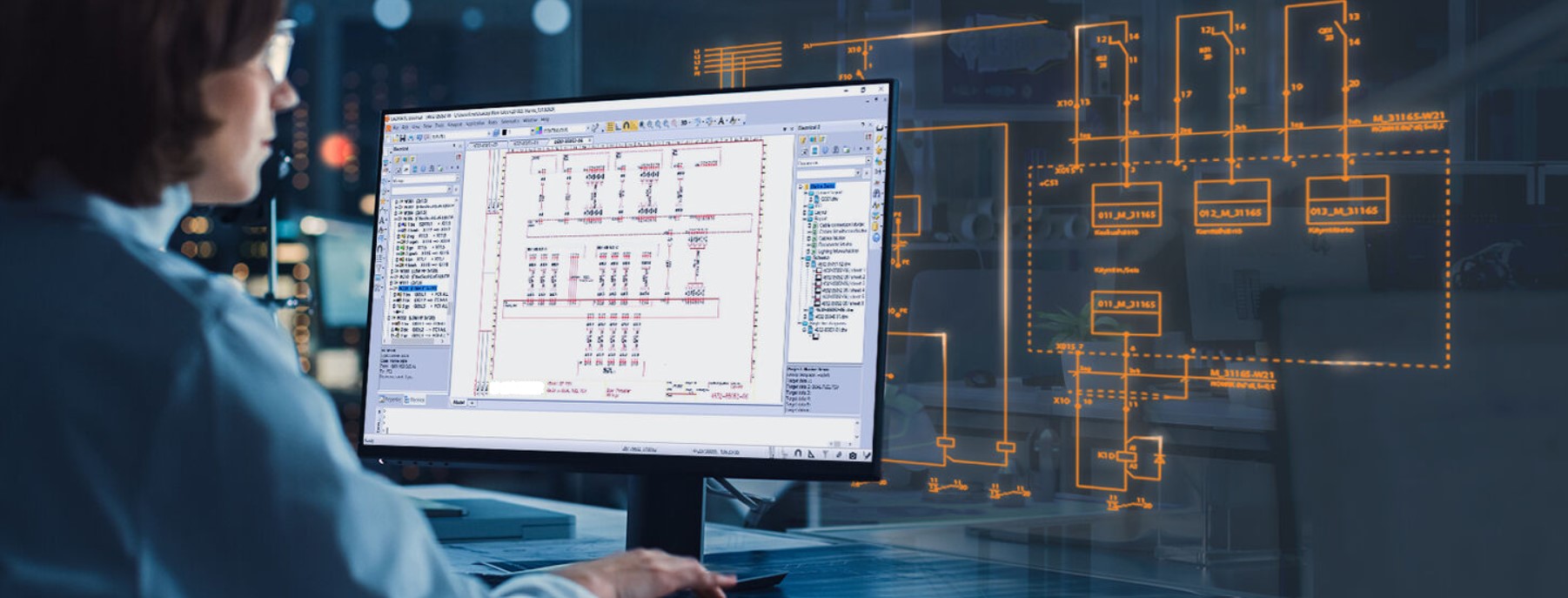Specialized Electrical Engineering Design Services for Residential and Industrial Solutions
Specialized Electrical Engineering Design Services for Residential and Industrial Solutions
Blog Article
Ingenious Electric Design Solutions for Modern Facilities
The evolution of modern facilities necessitates cutting-edge electrical design services that not only boost operational effectiveness but likewise address sustainability difficulties. As city environments grow progressively intricate, including modern technologies such as clever grids and renewable resource sources ends up being vital. These developments not only guarantee to optimize energy intake yet also foster durability against future needs. Nonetheless, the landscape of electric design is undergoing rapid improvement, triggering a closer assessment of arising fads and their effects for long-lasting infrastructure viability. What might the future hold for those that embrace these innovative techniques?
Value of Cutting-edge Electrical Design
Innovative electric design plays a critical duty in contemporary infrastructure, affecting not only performance but likewise sustainability. As cities progress and the demand for power increases, the requirement for sophisticated electric systems ends up being extremely important. These systems have to not just fulfill present demands however additionally prepare for future development and technical improvements.
A well-executed electrical design can dramatically minimize power usage, thereby reducing operational prices and minimizing environmental influence. By including renewable resource sources, such as solar panels and wind turbines, cutting-edge layouts can enhance energy freedom and strength. Smart grid technologies allow for real-time monitoring and monitoring of energy distribution, enhancing efficiency and minimizing waste.
Security is another vital element of electric design. Implementing advanced innovations and extensive requirements can reduce dangers connected with electrical failings, guaranteeing a protected atmosphere for homeowners and businesses alike. Furthermore, innovative layouts promote versatility, allowing frameworks to incorporate emerging innovations perfectly.
Secret Patterns in Electric Design
As the landscape of electric design remains to develop, several essential fads are shaping the future of the market. One substantial fad is the combination of wise technology into electrical systems. The spreading of the Web of Things (IoT) has made it possible for real-time tracking and control of electric devices, enhancing performance and facilitating anticipating maintenance.
One more trend is the expanding emphasis on modular design. This approach allows for scalable and versatile remedies, enabling framework to adjust to altering demands without substantial remodellings. Furthermore, making use of advanced simulation devices and Building Information Modeling (BIM) is becoming progressively common, streamlining the design procedure and boosting collaboration among stakeholders.
In addition, innovations in materials science are bring about the development of lighter, much more durable, and energy-efficient parts. This technology is specifically crucial for high-performance buildings and framework jobs.
Finally, there is a significant shift towards data-driven decision-making - electrical design services. Leveraging data analytics assists designers optimize systems for performance and cost-effectiveness. With each other, these trends symbolize a transformative period in electric design, boosting functionality, sustainability, and resilience in contemporary infrastructure
Lasting Energy Solutions
Lasting power services are increasingly becoming a vital focus in electrical design, showing a broader commitment to ecological obligation and resource performance. These remedies aim to reduce ecological influence while enhancing energy intake in various frameworks, from domestic buildings to huge industrial facilities.
One of the leading methods involves the integration of eco-friendly energy resources, such as solar panels and wind generators, into electrical systems. This not just decreases reliance on fossil gas but also improves energy durability. Additionally, innovative energy storage space systems, such as advanced batteries, enable effective administration and distribution of power, ensuring that surplus power produced throughout top manufacturing can be made use of during high need durations.
Moreover, energy-efficient design techniques are being taken on to enhance general system performance. This consists of using energy-efficient lights, heating and cooling systems, and clever building technologies that check and adjust energy usage based on occupancy and environmental problems.
Smart Grid Technologies
The implementation of sustainable power options naturally leads to the expedition of clever grid technologies, which play a crucial function in updating electrical systems. Smart grids leverage progressed communication technologies and information analytics to improve the integrity, performance, and sustainability of power distribution. By integrating electronic technology with standard grid infrastructure, these systems help with real-time tracking, automated control, and enhanced decision-making capacities.
Among the crucial functions of smart grids is their ability to fit renewable resource resources, such as solar and wind power. This versatility not only reduces reliance on nonrenewable fuel sources however also enables an extra decentralized energy manufacturing model. Wise grids enable demand response programs, where customers can adjust their power usage based on real-time prices, thereby promoting power conservation and decreasing peak lots needs.
In addition, wise grid modern technologies improve grid strength by making it possible for quicker identification and resolution of blackouts, site web ultimately decreasing downtime. With predictive upkeep and analytics, energies can optimize operations and enhance service delivery. As neighborhoods and cities proceed to progress, wise grid innovations are crucial for building a sustainable and effective electrical facilities that meets the demands of modern-day society.

Future-Proofing Facilities
To make sure long-term stability and versatility, future-proofing infrastructure is necessary in the rapidly progressing landscape of electric design services. As innovation developments and power needs change, it is critical that electric systems are made with versatility in mind. This requires incorporating scalable options that can suit future upgrades without demanding comprehensive overhauls.

In addition, sustainability must be a foundation of future-proofed designs. Utilizing renewable resource sources, here are the findings such as solar and wind, and enhancing energy performance lower reliance on fossil gas, aligning with international efforts to fight environment change.
Final Thought
By focusing on efficiency, sustainability, and flexibility, these services resolve the developing needs of energy systems. The assimilation of wise grid modern technologies and sustainable energy options boosts strength and reduces operational costs.
A well-executed electrical design can considerably reduce power consumption, thus decreasing functional expenses and minimizing environmental influence. By incorporating sustainable power sources, such as solar panels and wind turbines, innovative designs can enhance power independence and strength. In addition, innovative power storage space systems, such as advanced batteries, make it possible for efficient management and distribution of energy, guaranteeing that surplus energy generated during optimal production can be used throughout high need durations.
Wise grids make it possible for demand feedback programs, where consumers can change their power use based on real-time pricing, thus promoting energy conservation and minimizing peak lots demands. (residential electrical design)
As modern technology breakthroughs and energy needs shift, it is crucial that electric systems are developed with adaptability in mind.
Report this page